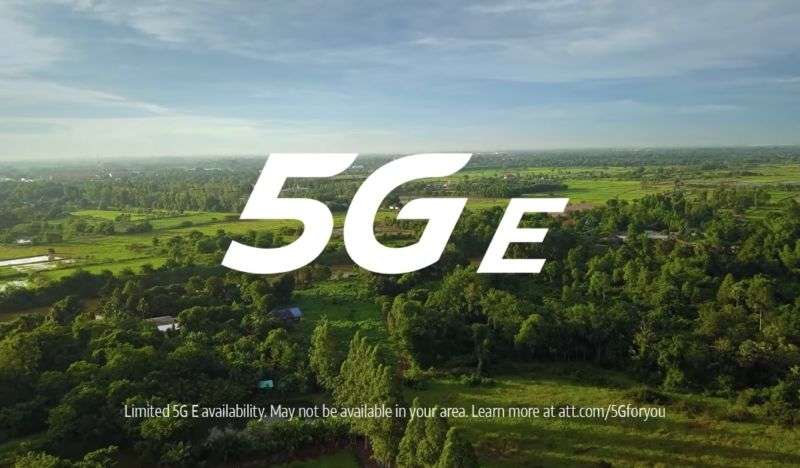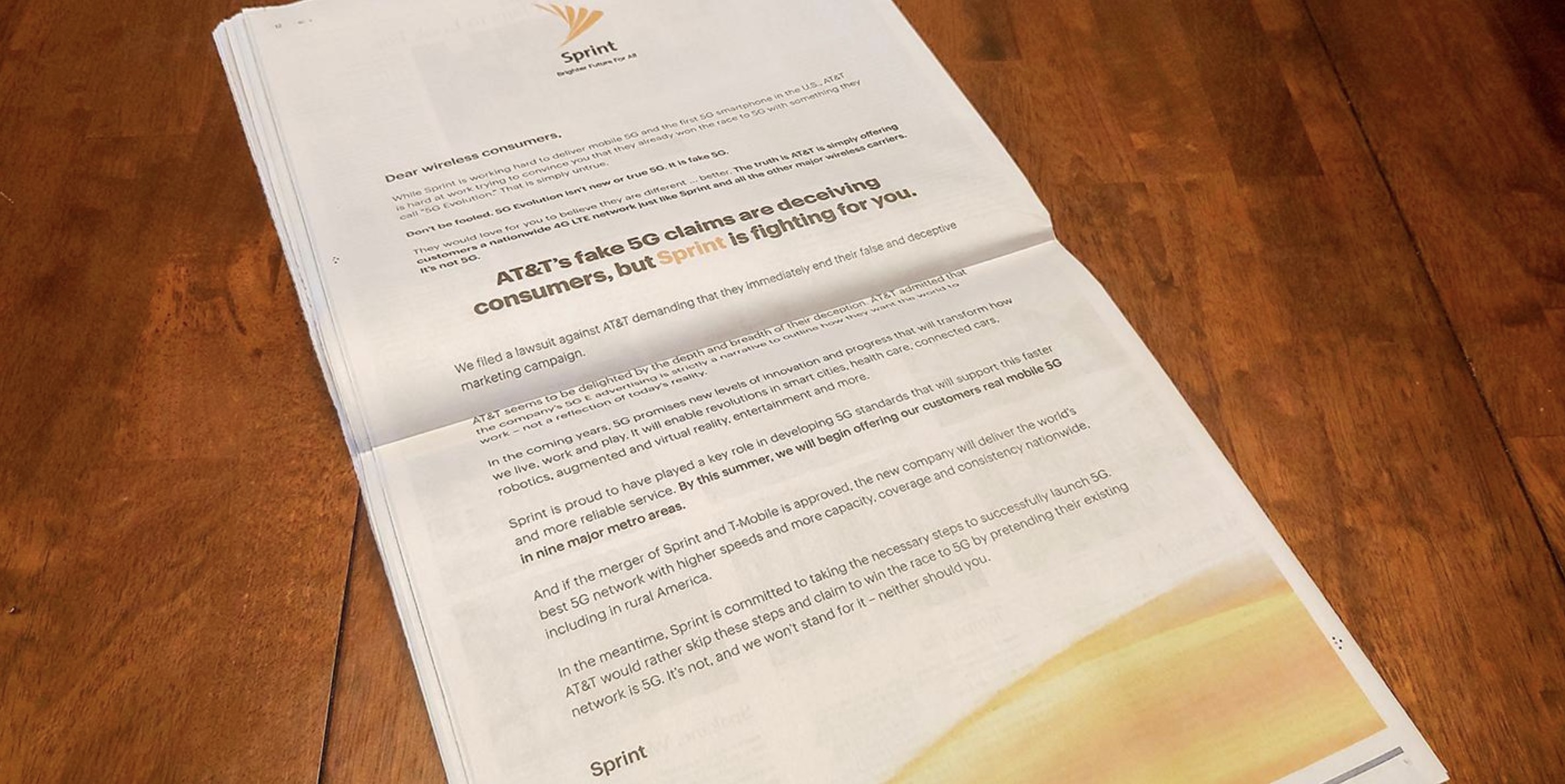
Sprint steps up fight against AT&T’s “fake 5G” with full-page Sunday NYT ad

Sprint is warning customers not to be fooled by AT&T’s “fake 5G” claims.
One month after suing AT&T, Sprint took out a full-page ad in the Sunday New York Times to spread the word that AT&T’s “5G E” is really just 4G. The ad takes the form of an open letter and begins:
Dear wireless consumers,
While Sprint is working hard to deliver mobile 5G and the first 5G smartphone in the US, AT&T is hard at work trying to convince you that they already won the race to 5G with something they call “5G Evolution.” That is simply untrue.
Don’t be fooled. 5G Evolution isn’t new or true 5G. It is fake 5G. They would love for you to believe they are different… better. The truth is AT&T is simply offering customers a nationwide 4G LTE network just like Sprint and all the other major wireless carriers. It’s not 5G.
We filed a lawsuit against AT&T demanding that they immediately end their false and deceptive marketing campaign.
AT&T seems to be delighted by the depth and breadth of their deception. AT&T admitted that the company’s 5G E advertising is strictly a narrative to outline how they want the world to work—not a reflection of today’s reality.
Sprint’s open letter repeated its own misleading claim that it needs to merge with T-Mobile in order to deliver a robust nationwide 5G network. Still, Sprint said it plans to offer “real mobile 5G in nine major metro areas” by this summer, regardless of whether the merger is approved.
“Sprint is committed to taking the necessary steps to successfully launch 5G,” the open letter concluded. “AT&T would rather skip these steps and claim to win the race to 5G by pretending their existing network is 5G. It’s not, and we won’t stand for it—neither should you.”
We contacted AT&T today and will update this story if we get a response.

5G E is 4G LTE
Sprint is correct that what AT&T calls 5G Evolution is simply 4G LTE. As we’ve previously written, AT&T says that 5G E is different from its normal 4G network because it uses 256 QAM, 4×4 MIMO, and three-way carrier aggregation. But those technologies are part of the years-old LTE-Advanced standard and are already used by Verizon, T-Mobile, and Sprint on their 4G networks.
AT&T does offer a real 5G network in parts of 12 cities, though there aren’t yet any smartphones that work on it. Some AT&T ads tout this early 5G deployment, demonstrating that AT&T could run an entirely truthful marketing campaign that highlights the real progress it has made toward 5G. But AT&T also renamed large portions of its 4G network and in the process changed the 4G network indicator on smartphones to 5G E. AT&T Communications CEO John Donovan recently defended the misleading campaign, saying, “Every company is guilty of building a narrative of how you want the world to work, and I love the fact that we broke our industry’s narrative.”
“AT&T is not offering its customers 5G but is delighted by the confusion they’ve caused with their deceptive ‘5G E’ marketing and attempt to convince consumers that they’ve already won the 5G race,” Sprint Senior VP David Tovar said in an announcement of Sprint’s open letter to consumers.
Sprint said it commissioned a survey that found 54 percent of consumers “mistakenly believed, based on AT&T’s claims, that the company’s 5G E network is the same as or better than a true 5G network.” Additionally, “43 percent of consumers wrongly believed that if they were to purchase an AT&T phone today, it would be capable of running on a 5G network,” Sprint said.
In its lawsuit in US District Court for the Southern District of New York, Sprint alleged that AT&T violated a US law prohibiting false advertising and New York state laws against deceptive acts and practices and false advertising. Sprint is asking the court for monetary damages and an injunction preventing AT&T from continuing the 5G E marketing campaign.
The court has scheduled a hearing for April 22.




